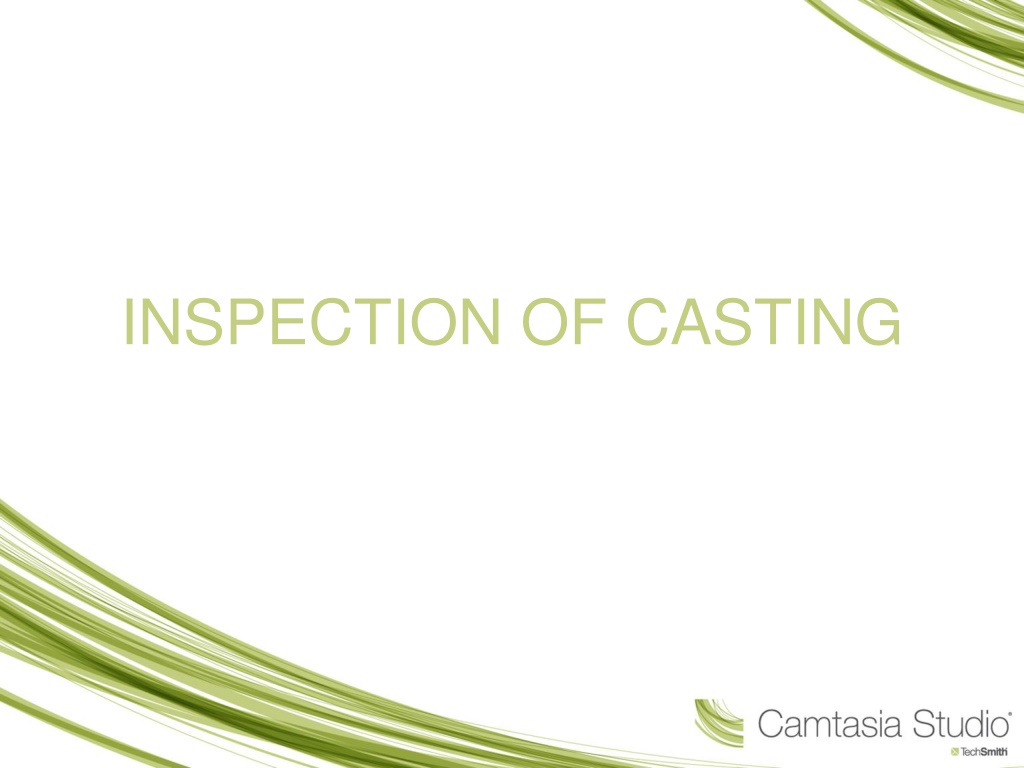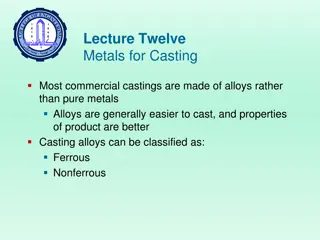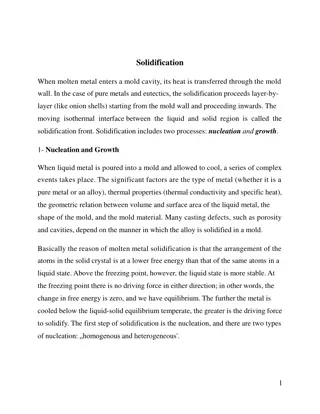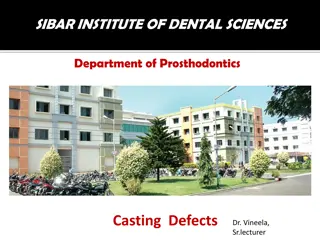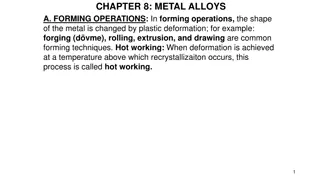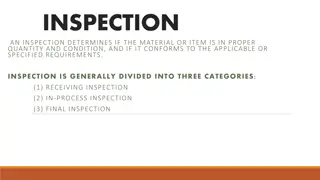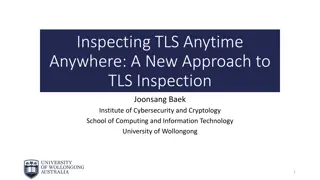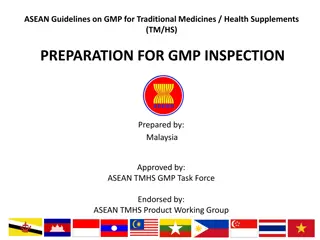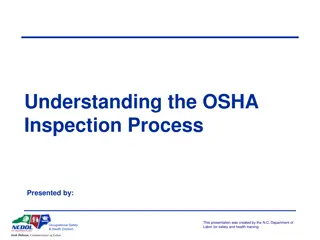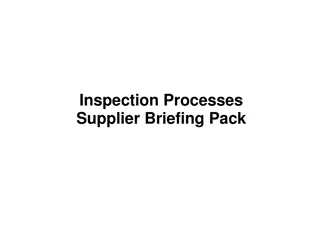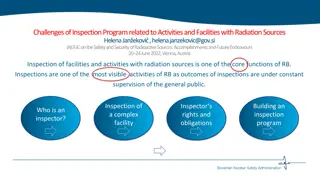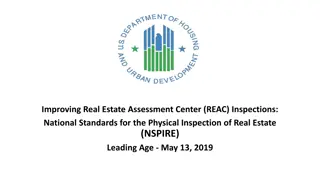Casting Inspection Methods and Techniques
Various methods such as visual inspection, sound test, impact test, pressure test, radiography, and magnetic particle testing are used for inspecting castings to detect defects like blow holes, cracks, mismatches, and discontinuities. Each method serves a specific purpose in evaluating the quality of castings and ensuring their integrity.
Download Presentation

Please find below an Image/Link to download the presentation.
The content on the website is provided AS IS for your information and personal use only. It may not be sold, licensed, or shared on other websites without obtaining consent from the author. Download presentation by click this link. If you encounter any issues during the download, it is possible that the publisher has removed the file from their server.
E N D
Presentation Transcript
VISUAL INSPECTION It can only indicate surface defects such as blow holes, fusion, swells, external cracks, and mismatch
SOUND TEST This is a rough test to indicate a flaw or discontinuity in a casting. The casting is suspended from a suitable support free of all obstructions and tapped at various places on its surface with a small hammer. Any change in the tone produced indicates the existence of a flaw. The method cannot indicate the exact location and extent of the discontinuity.
IMPACT TEST In this test the casting is subjected to a blow from a hammer of known weight striking or falling on the casting. Defective castings fail under the impact of the blow but the method is very crude and unreliable.
PRESSURE TEST This test is carried out on castings required to be leak proof. All openings of the castings are closed and a gas or fluid under pressure is introduced in it. Castings having porosity leak under this pressure. The leakage may be detected by submerging the casting in a water tank or using a soap film if the pressure is applied by compressed air. If a liquid is used for applying pressure the leakage can be found by visual inspection.
RADIOGRAPHY Radiography uses X-rays or gamma rays penetrating through the castings and giving a shadow picture on a photographic film placed behind the work piece.
RADIOGRAPHY The ability of these waves to penetrate through metal depends also on the density of the metal and as such they can penetrate more easily in places where there is less metal that those where more metal is present leading to a shadow picture formation on the film. Any defects in the casting can easily be identified from this picture. Because of their shorter wavelength gamma rays have a better penetration through the metal and are more commonly used.
MAGNETIC PARTICLE TESTING This test is used for detecting cracks in metals like cast iron and steel which can be magnetized.
MAGNETIC PARTICLE TEST For carrying out the test the casting is magnetized and then fine particles of iron or steel are spread on its surface. Presence of a crack or void in the casting results in interruption of the magnetic field and leakage of magnetic flux at the place of the crack. The particles of iron or steel spread on the casting surface are held by this leaking flux giving a visual indication of the nature and extent of crack. Very small cracks or voids at or near the surface which may not even be detected by radiography are easily revealed by this method
PENETRATION TEST This method also is used for detecting very small surface cracks This method can be used for any material
PENETRANT TEST The parts to be tested are either dipped into or covered with a penetrant testing liquid which has very good wetting and penetrating ability. The liquid is drawn into the cracks or voids by capillary action. After the penetrant has been applied to the surface to be tested extra penetrant is wiped off the surface is dried and a developer applied to it. This developer helps in drawing out the penetrant so that it becomes visible on the surface. The penetrant liquids often contain materials which fluoresce under ultraviolet light or a die to indicate their presence.
ULTRASONIC TEST Ultrasonic testing is used to detect defects like cracks, voids or porosity within the interior of the casting. The method uses reflection and transmission of high frequency sound waves. The time interval between the transmitted ray and reflected ray is recorded by a cathode ray oscilloscope. Any crack or void in the casting results in reflection or some of the sound from the crack which appears as a pip between the two pips representing the thickness of the casting. The depth of the crack from the surface of the casting can be easily calculated from the distance between these pips.
